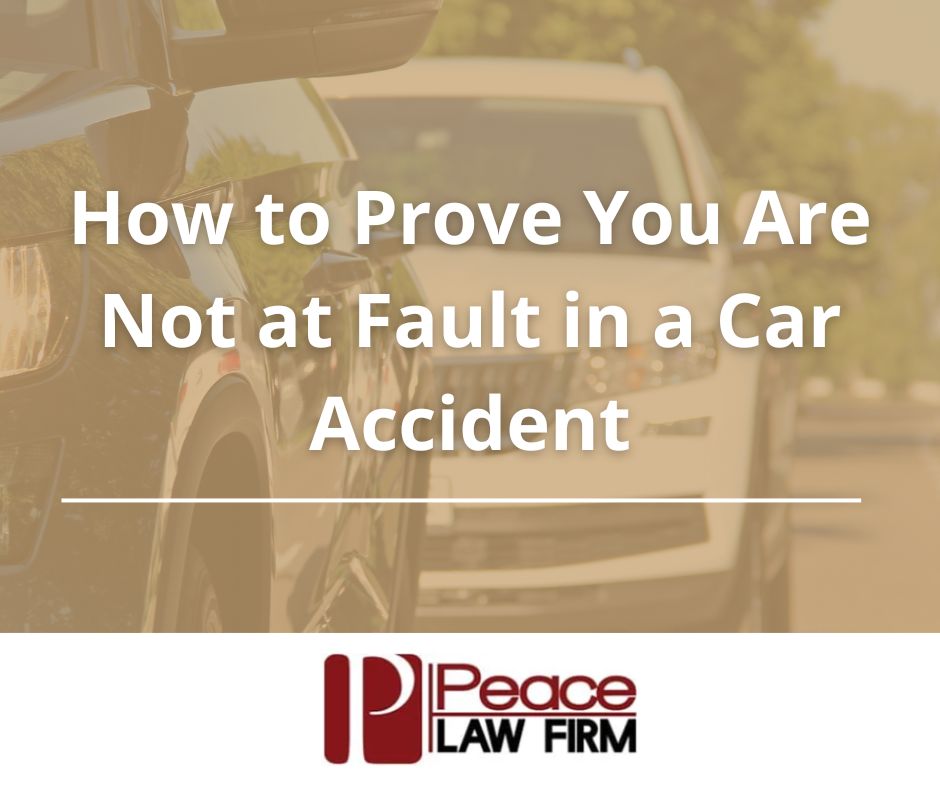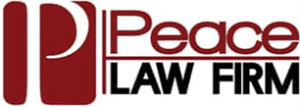How to Prove You Are Not at Fault in a Car Accident

Establishing who is responsible is an essential part of dealing with the aftermath of an accident. Drivers often mistakenly assume that the other party will admit to fault. You may think your hands are clean, but the other driver—or their insurance company—might not agree.
If you’re not proactive about demonstrating you’re not at fault, you’re at risk of losing out on valuable compensation.
Let’s walk through how to prove you are not at fault in a car accident. We’ll explain how to get the evidence you need to demonstrate you’re not to blame for a collision. We’ll also offer some important tips for handling insurance claims.
What Does It Mean to Be “at Fault” in a Car Accident?
Generally, the driver who causes the accident is the one at fault.
Identifying who’s at fault can seem easy when a driver purposely breaks traffic laws or engages in other dangerous behavior, like running a red light.
But in other situations, blame isn’t so clear-cut. Sometimes, multiple drivers can share the responsibility for a crash, whether they acted intentionally or unintentionally. For example, if you accidentally rear-end someone who was doing an illegal U-turn because you were distracted, both you and the other driver could hold a portion of the fault in the crash.
In a state like South Carolina, this situation is called comparative negligence or comparative fault. According to state law, the amount of damages you can obtain from another at-fault driver will be reduced according to the percentage of fault you had in the crash. For example, if you suffered $10,000 in damages and you were 20% at fault, you could recover only $8,000.
However, this is only possible if you’re no more than 50% at fault. For example, if it turns out that 60% of the responsibility for the crash lies with you, then you can’t recover any money.
How Do I Show That an Accident Isn’t My Fault?
Put simply, the most effective way to show that you’re not at fault for an accident is to prove that another driver is. To do this, you need evidence: physical proof that they caused the crash and associated damage.
To have a viable claim, prove that the other party’s negligence directly caused your injury. Your damages may be reduced if you are partially at fault.
You can gather evidence of another driver’s fault in a variety of ways, as discussed below:
Photographs
One of the most important steps you can take after an accident is to capture photographs of the scene. Photographic evidence can paint a clear picture of the conditions and circumstances at the time of the accident.
Take pictures of the following:
- Damaged vehicles: Make sure to get close-up and wide-angle shots of both your vehicle and the other driver’s car to show the extent of damage.
- Road conditions: Capture road markings, weather conditions, wet or icy spots, and any other surface issues that may have contributed to the crash.
- Skid marks and debris: Document any tire marks or debris that could indicate braking, speed, or direction changes during the accident.
- Traffic signs and signals: Show the location of stop signs, yield signs, traffic lights, or any other signage that could have influenced driver behavior.
- Obstacles to vision: Photograph trees, parked vehicles, or any other objects that could have blocked the view of either driver.
These images can serve as compelling evidence to help recreate the scene and pinpoint the at-fault driver.
Witness Testimony
Eyewitness accounts can be crucial in assigning fault in an accident. If anyone witnessed the crash, get their contact information as soon as possible.
Witness testimony can:
- Provide neutral and unbiased accounts of what happened.
- Offer details that neither you nor the other driver may have noticed.
- Help confirm the sequence of events or provide clarity if there is any dispute.
Remember, independent witnesses who have no stake in the outcome are often seen as more credible than the involved parties. This testimony can help solidify your case if it aligns with your version of events.
Police Report
A police report is an official document that can be a powerful tool in proving you weren’t at fault. After an accident, the responding officer will create a report that often includes their assessment of the crash.
The police report may contain:
- Descriptions of the scene: Road conditions, vehicle damage, and any violations of traffic laws.
- Statements from drivers and witnesses: This can help corroborate your version of events.
- Assignment of fault: In some cases, the police will explicitly state which driver they believe is responsible for causing the crash.
Having the police identify the other driver as at fault can significantly strengthen your claim when dealing with insurance companies or in court.
Video Recordings
Video evidence is often the most reliable way to prove fault in an accident. If you or anyone nearby had a dashboard camera or if surveillance cameras captured the event, try to obtain copies of the footage.
This video can provide:
- A real-time visual account of the accident.
- Clear proof of traffic violations, such as running a red light or failing to yield.
- An unbiased depiction of the circumstances, helping to eliminate any confusion or disputes over the events.
Footage from traffic cameras, nearby businesses, or even smartphones can help paint a complete picture of the incident.
Cell Phone Records
Distracted driving is one of the leading causes of car accidents, and cell phone records can be critical in proving the other driver wasn’t paying attention at the time of the crash.
To use cell phone records as evidence, you may need:
- Phone call and text logs: These can show whether the other driver was making calls or sending messages around the time of the accident.
- GPS location data: This can help establish whether the driver was in motion or using their device while driving.
If another driver was texting, on a call, or otherwise using their phone, these records can make it easier to prove negligence on their part.
Doctor’s Report
The nature of your injuries can sometimes indicate how the accident occurred and which driver was at fault. Your doctor’s report and medical records can provide valuable insights into the cause of the crash.
Medical documentation may help to:
- Correlate injury patterns with the mechanics of the crash (e.g., rear-end collisions causing whiplash).
- Disprove any false claims by the other driver that could try to shift the blame onto you.
- Show evidence of trauma that matches your account of the accident.
Make sure you seek medical attention immediately after the accident, even if you feel okay at the time. Some injuries can take time to manifest, and delaying treatment could hurt your case.
Insurance Assessment
An insurance company’s investigation can help establish fault. If your insurer investigates the accident and concludes that you were not to blame, it can provide strong support for your case.
Insurance assessments often include:
- Vehicle damage analysis: Adjusters can determine whether the damage patterns support your version of events.
- Interviews with the drivers and witnesses: These are often conducted to establish credibility and uncover details.
- Legal standards: Insurance companies follow specific guidelines to determine fault, which can further support your claim.
If your insurance company’s findings align with your claim, it can bolster your case when dealing with the other party’s insurance or in court.
Generally, the best place to gather evidence is at the scene of the accident, ideally not long after it happened. Once you make sure anyone who’s injured has gotten help, try to capture as much information as you can from the scene. Waiting too long can mean losing out on potentially valuable details.
I Filed an Insurance Claim in a Car Accident That’s Not My Fault. What To Do Next?
There are some important things you can do to protect your claim while you’re waiting for the insurance company’s investigation.
Don’t Admit Fault
A representative from the insurance company will likely reach out and ask you to tell them your version of events from the accident. The statement they request could be written or verbal. You are not obligated to give a statement to the insurance company. Instead, refer them to your attorney, and let them handle communications with the insurer.
If you do speak to an insurance representative, don’t say anything to suggest you had any responsibility in the crash. It’s best to stick to a factual description of the events, the vehicles, and the people involved.
Avoid Posting on Social Media
Insurance adjusters often look into the social media accounts of individuals who file claims. Even if your accounts are private, don’t share any photos, videos, or other details of the accident online. Anything that insurers find there can be potential evidence that discredits your claim.
See a Doctor
Even if you’re only mildly hurt, it’s a good idea to get a full medical exam after an accident. For one, people who are seriously injured are often not aware of it immediately. Have a medical professional evaluate your injuries and follow their treatment recommendations closely. Keep track of any medical bills and costs that could be eligible for compensation.
Do I Need an Attorney to Prove It’s Not My Fault in a Car Accident Claim?
You don’t always need a lawyer to show you’re not to blame for a crash. But in many cases, having the support of a legal professional can make dealing with the aftermath of a car accident much smoother.
For one, an attorney can help you get a jump on collecting the evidence you need to disprove fault. In the chaos after a crash, it can be tough for individuals to stay on top of what they’ll need for their case. A car accident lawyer can conduct interviews with witnesses and gather physical evidence while you take time to recover from the accident.
If an insurer does claim you are at fault, an attorney’s support is essential. A personal injury lawyer in South Carolina can challenge the insurance company’s evaluation and conduct an independent investigation.
In situations when the fault is shared, having an attorney on your side is also critical. A seasoned lawyer can help ensure that an insurer accurately evaluates your percentage of responsibility. This can mean a difference of thousands of dollars in compensation.
A Lawyer Can Help You Protect Your Claim
Car accidents are confusing, stressful situations. An insurance company may not always get the full picture in their investigation, and they have an incentive to put as much blame on you as possible. To make sure you’re protected, it’s best to consult with an experienced personal injury lawyer as soon as possible after a crash. A qualified legal professional is the best resource for case-specific questions about how to prove you are not at fault in a car accident.
John Peace of the Peace Law Firm has spent over 20 years helping victims recover from the emotional and financial turmoil of a car accident. As a former insurance professional, he has a deep understanding of the challenges and complexities of the accident claims process. The Peace Law Firm has built a reputation on our diligent, client-centered representation. Contact us today to learn more about how we can help with your accident claim.
